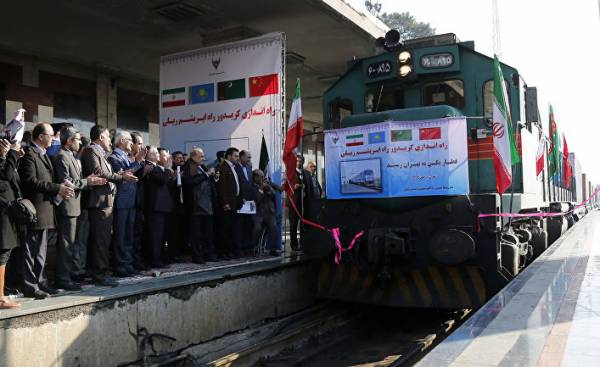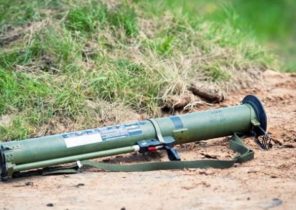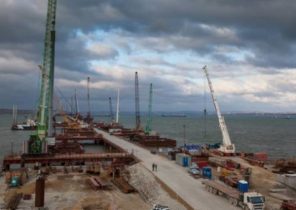
The power and potential of the New silk road is in its universality. This new network of upgraded transport routes and new trading centers will be built between China and Europe. Efficacy, safety and healthy competition is that it’s not one route but a network of a plurality of interconnected TRANS-Eurasian corridors. As in the days of the ancient silk Road, if one corridor will disappear because of the change of government, war, economic upheaval or dispute over tariffs, the goods will be send to the same destination via alternate routes — just as the river bends around boulders.
Eurasia land mass combining Europe and Asia, is rapidly drawn into a single market covering more than 65% of the population, 75% energy and 40% of GDP in the world, and it is a revolutionary rail routes link it all together.
There are currently three operational rail corridor, which physically connect China and Europe. The Northern corridor runs mostly through the territory of Russia and for the most part goes along the route of the TRANS-Siberian Express. The Central route passes through the territory of Kazakhstan, connecting to the Northern route in the West of Russia. The southern route goes through Kazakhstan to Aktau, and either crosses the Caspian sea (by ferry), or proceeds to Iran before crossing Azerbaijan, Georgia and Turkey. The travel time in each corridor ranges from 10.5 to 16 days.
The Northern and Central land routes of the New silk road are currently on the rise, and the South is only now beginning to develop. The more developed routes effectively connect only the three major customs zones — China, the Eurasian economic Union and the EU — which is only two border crossings on the route length of more than nine thousand miles, the southern route is more complicated. Entering Kazakhstan from China to Khorgos, the route then passes the separate customs in Azerbaijan, Georgia and Turkey, before joining the European railway network.
Paradoxically, several significant political and economic conflict actually led to the intensification of the development of this southern corridor.
“This route is to bypass Russia,” explained Martin Voetmann (Martin Voetmann) from DP World in the port of Aktau.
The EU sanctions against Russia because of the Ukrainian conflict has caused the reaction of the embargo by Russia against many products of the EU. Such European products such as meat, agricultural products, and cheese, is not only prohibited to import into Russia, but they are not even permitted in the third country through the territory of Russia.
“The big problem we face is the fact that in Russia still there are sanctions for the transportation of perishable products from Europe to China or from Europe to Kazakhstan through Russia. Now this is a problematic issue,” said Ian Cullen (Jan Koolen) from Unit 45 — the company, which develops high-tech containers for transport, allowing to carry fragile electronics and perishables by land between China and Europe all year round. “But now they’re also looking at another corridor Baku — Aktau southern route”.
The main advantage of the transportation bypassing Russia is that manufacturers and carriers can bypass the reactionary sanctions countries and seamlessly deliver their products to the desired markets. The Russian embargo seriously undermined the ability of Europe to fully exploit the newly established TRANS-Eurasian railway network, since the products that manufacturers were sent overland to China, mostly are those also banned in Russia products. The TRANS-Caspian route allows you to bypass this a trade blockade, and the corridor starts to gain momentum, as Europe increasingly seeks to fill a new cargo containers on the way back from China.
“You have the rates of return, and began Boatman. — Then your container and platform are in Europe, what will you do with them next?”
Is logistics 101: optimal is a vicious cycle in which containers carrying cargo in both directions. The direction China — Europe is now intensified — nearly two thousand trains now cross Eurasia in a westerly direction. Now you need to fill the trains that return from China. This offers Europe a new opportunity to access the rapidly growing Chinese middle class.
Major initiatives such as the commissioning of the first cargo train from Britain to China last week, the creation of the logistics of the New silk road, a joint venture of the three largest European freight forwarders of Europe, and the beginning of activities in Europe Kazakhstan multimodal company KTZ Express, show that access to China by rail is becoming increasingly interesting for Western companies.
Currently, Voetmann busy developing solutions that will help transform the port of Aktau in the node for the carriage of the TRANS-Eurasian cargo from West to East.
“So you can potentially find fast and quite cheap [option] for transporting return cargo from Europe to China, he said. — It’s pretty fast, and maybe we can do this cheaper method that will open a number of new features as soon as we select this route”.
Currently, however, the southern rail corridor uses only as necessary. Regular posts yet, but soon this should change.
“As the demand for services South of the railway corridor continues to grow, the government of Lianyungang and Chengdu hope to launch scheduled flights to Istanbul in the coming months. Planned then a message will increase the flow of goods along the corridor and promotes trade between China and Europe,” said Steve Huang (Steve Huang), General Manager in China company DHL, a German forwarding giant, who is one of the main companies with established routes on the New Silk road.
The promotion of regular reports along the southern railway corridor will continue with commissioning of the new railway line Baku — Tbilisi — Kars (BTK) that will directly connect Baku with Azerbaijan and Turkey.
The promotion of regular reports along the southern railway corridor will continue with commissioning of the new railway line Baku — Tbilisi — Kars (BTK) that will directly connect Baku with Azerbaijan and Turkey.
“It is expected that the railway Baku — Tbilisi — Kars railway will be completed in 2017. As soon as it will be put into operation, the transport of goods from China to Turkey will be faster and more cost effective,” continued Juan.
The strength of the initiatives of China’s “One belt, one road” and the broader New silk road is to create a diverse and interconnected network — a strengthened economic systems throughout Eurasia. In this network there will be no single route, which would be easy to break.
Or the words of my seven year old daughter: “You just said that there are many ways, dad, so, you need to call it the New Silk roads”.







